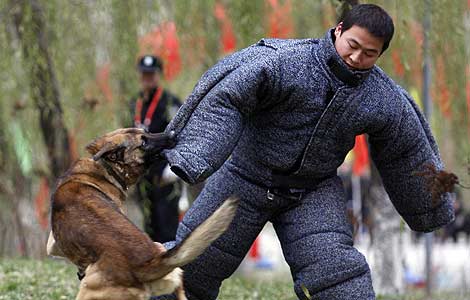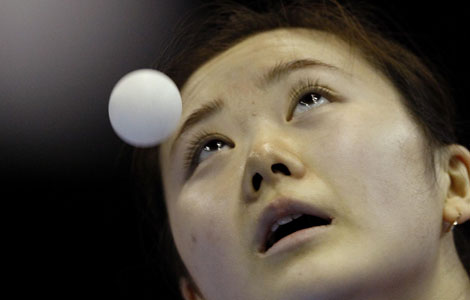China to lower RRR for first time in three years
Updated: 2011-11-30 20:43
(Xinhua)
|
|||||||||
BEIJING -- The People's Bank of China, the country's central bank, said Wednesday it will lower banks' reserve requirement ratio (RRR) by 50 basis points for the first time in three years in order to replenish liquidity in the country's banking system as inflation eases.
The latest cut, effective on Dec 5, drops the RRR to 21 percent for large commercial banks and 17.5 percent for mid- and small-sized banks. An estimated 396 billion yuan ($62.38 billion) in capital will be released into the market.
The move signals that the government is set to stabilize economic growth after easing inflationary pressures, although it is not yet known if the change will bring about a full-on move toward a looser monetary policy, analysts said.
"The RRR cut is a signal for stabilizing growth, making the central bank's fine-tuning of the country's monetary policy more explicit," said Zhuang Jian, a senior economist with the Asia Development Bank.
The economy's growth slowed to a two-year low of 9.1 percent in the third quarter of this year, down from 9.7 percent and 9.5 percent in the first quarter and the second quarter, respectively, according to data from the National Bureau of Statistics.
"The reduced RRR rate will ease banks' credit crunch, caused by a high RRR and decreased yuan funds from foreign exchanges, as well as promote reasonable growth in banking loans and stabilize economic growth," said Lian Ping, chief economist at the Bank of Communications.
PBOC data indicate that yuan funds stemming from foreign exchanges dropped 24.9 billion yuan month-on-month in October, the first decrease in nearly four years.
The PBOC has implemented a raft of measures to ease credit controls, including encouraging the banking industry to increase lending to small- and micro-sized enterprises and ensuring sufficient funds for ongoing national projects.
Last week, the PBOC rolled back RRRs for six rural banks in east China's Zhejiang province to 16 percent from 16.5 percent.
As government tightening measures gradually take effect and international commodity prices decline, consumer prices have eased in recent months, making it possible to fine-tune the country's monetary policy.
The NBS reported a 5.5 percent increase in the Consumer Price Index (CPI) in October, dropping from a 37-month high of 6.5 percent in July.
Lian said he expected the CPI to fall under 4 percent in December and stand around 5.4 percent for the duration of the year.
China has made stabilizing prices a top priority this year. To rein in runaway inflation, the PBOC hiked banks' RRR six times and the benchmark interest rate three times this year.











